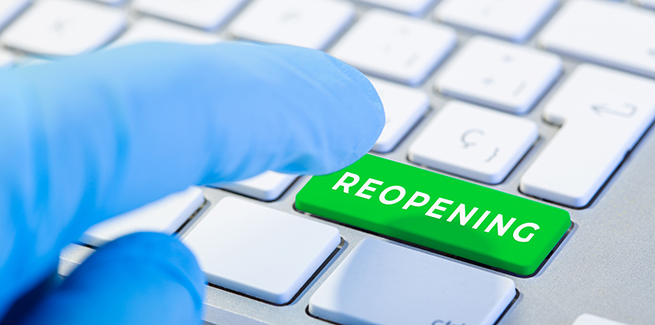Strategies for bringing back clients, finances, and production postpandemic

As stay-at-home orders ease and social distancing policies begin to relax, hospitals need to reevaluate pandemic-specific protocols enacted to prevent the spread of coronavirus as they figure out how to recover lost patients, finances, and production.
Darren Osborne, MA, director of economic research for the Ontario Veterinary Medical Association and economic consultant for the Canadian Veterinary Medical Association, tackled these issues in a free webinar earlier this month called Recovery Plan: Strategies for Bringing Back Clients, Finances, and Production. The webinar has received positive feedback, so NEWStat asked Osborne to share some of his strategies with our readers.
Osborne says his strategies assume that hospitals are reopening in phases as authorities in different regions roll back lockdown restrictions to varying degrees and on different timelines, with the expectation that many hospitals are still in a phase that requires curbside service.
That turns out to be a pretty safe assumption.
After looking at the pros and cons of opening up completely and weighing risks such as staff safety and shortages of personal protective equipment, many hospitals plan to continue curbside service, at least for the short term.
“Even in areas that have allowed clients to go back inside the hospital, a lot of hospitals are opting to stick with curbside,” Osborne confirms.
At this point, the general public is used to the idea of curbside pickup for many things, such as groceries, garden supplies, etc., so hospitals can capitalize on that, Osborne says. The key is to turn it into more of concierge-type of service. That means heaving clear communication with the client about how the process works. That includes:
- Putting up parking signs so clients know where to park for service
- Having someone greet the client when they arrive. Ideally, your greeter should be someone familiar with the client and can greet them and their pet by name
- Providing instructions for clients to submit their information online before the visit to cut down on phone calls to the practice
- Packing up orders of pet food, medications, and so on before clients arrive
- Offering a way for clients to pay for products and services online
Online payments are particularly important, Osborne says: “Mobile point-of-sale terminals take a lot of time and your staff is already stressed out. Having clients pay online is one way to take a lot of stress off.”
If you have a webstore associated with your website, Osborne says, encourage clients to shop online and pick up their orders curbside. “This provides an opportunity to sign clients up for automatic reorders,” he notes, “which is something a lot of hospitals were moving toward prior to the pandemic.”
Osborne is also very big on telemedicine, although that wasn’t always the case.
“I was not a fan of telemedicine prior to all this,” Osborne says, because it can be tricky to adopt the mindset of charging people for talking to them over the phone.
But under the restrictions of the pandemic, while veterinarians have been unable to see clients face-to-face, Osborne says the telemedicine platform has accrued huge value, because it’s allowed veterinarians to make that paradigm shift: “Suddenly, veterinarians have an opportunity [and perhaps more importantly, a reason] to charge for services over the phone.”
Osborne calls telemedicine “a conspicuous change” from free advice over the phone: “A lot of veterinarians struggle to answer the question, ‘How do I start charging for something that I’ve been giving away for free for my entire career?’”
Charging your normal exam fee for a telemedicine consult is a central part of Osborne’s coronavirus recovery strategy. “In the past, [that fee, if charged at all] has been discounted, and I don’t think there’s any need for discounting anymore because clients genuinely see the value in talking to a veterinarian [online or over the phone], especially when veterinary medicine is scarce. So charge full freight for your exam fee.”
Telemedicine has other advantages.
“The atmosphere of the telemedicine consult has inherently more value than a quick phone call from the veterinarian,” Osborne says. “We’re recommending hospitals use telemedicine to fast-track exams. If you’re at a point where you can start seeing patients for wellness exams, you can have a technician contact clients prior to the exam.” The technician can gather the medical history so when the veterinarian uses the same platform to do the consult, they can see what the technician has already discussed with the client. “That saves the veterinarian anywhere from 5 to 10 minutes.” It also means staff can do the job from home. “If an employee needs to stay home because of childcare issues or to care for a sick family member, they can still be lining up appointments and getting histories from clients.” Osborne says he knows of one veterinarian who’s doing nothing but telemedicine appointments all day.
Telemedicine also saves time between appointments, Osborne points out, “Because you don’t have to disinfect.”
As for your takeaway? Osborne hopes that it’s to start charging full price for exams done over the phone. And he hopes that becomes standard operating procedure long after the pandemic is over: “If veterinarians finally recognize the value of their time on the phone, then that’s one giant step forward for the profession.”
Photo credit: © iStock/SetsukoN



